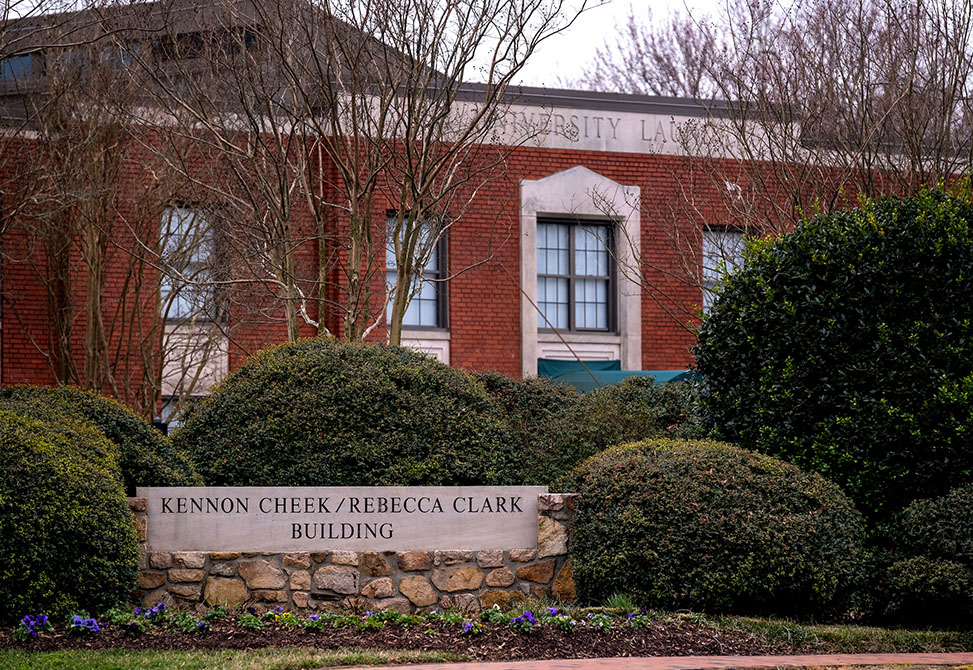Cheek/Clark Building (University Laundry)
Located on West Cameron Avenue next to the chiller plant, this building currently houses offices and meeting rooms for Carolina's grounds, housekeeping, and building services operations. Employees in these units maintain and operate Carolina's 300-plus academic buildings, research facilities, and residence halls, more than 700 acres of campus grounds and landscapes, and 4,000 total acres throughout Orange County.
The building's original purpose is illustrated by the name that still adorns the front entrance: University Laundry. The university opened the building in 1925 to operate laundry service for campus and town and hired African American employees to staff it. Carolina offered laundry services —a revenue stream —from 1925 until some time in the late 1970s, when all of the residence halls contained coin-operated machines, and transferred other laundry and dry-cleaning services to outside vendors. Over time the building served as a headquarters for Carolina employees who cared for buildings and grounds and was a center for employee activism over the years, as various people lobbied for better working conditions for the university's lowest-paid workers.
The building was rededicated in September 1998 as the Kennon Cheek/Rebecca Clark Building. The renaming recognized Kennon Cheek and Rebecca Clark, two people who advocated for better working conditions for Carolina's lowest-paid employees and who were also important figures in the Chapel Hill community.
Kennon Cheek was born in Chatham County and came to work at Carolina in 1917. In 1930 he cofounded the Janitors Association to lobby the administration for better working conditions for all of its African American employees. During the early years of the Janitors Association, janitors not only provided cleaning services but also painted, did repair work and carpentry, ran errands, and delivered campus mail. In the Chapel Hill community, Cheek helped move Hackney's Educational and Industrial School from its location on South Merritt Mill Road to the Northside neighborhood west of campus, and helped raise funds for the rebuilding of St. Joseph CME Church on West Rosemary Street after the church burned down.
Rebecca Clark, also from Chatham County, began work at the university as a maid at the Carolina Inn in 1937 and later worked in the laundry building. Clark returned to the university in 1953 as a nurse's aide and became the first licensed practical nurse to work in the campus infirmary. During her time in the university laundry, Clark began to work on labor issues. She met with then president Frank Porter Graham to appeal for better working conditions in the laundry. In 1942 she took over as the shop steward for the State, County, and Municipal Workers of America, a subgroup of the Congress of Industrial Organizations that advocated for the rights of low-wage public workers. Building on the relationships created between the Janitors Association and Graham's administration, Clark was able to win wage increases for the laundry workers, in addition to safer work spaces and more reasonable work schedules.
Date Established: 1925
Date Range: 1925 – Present

Cheek/Clark Building, 2018. Photo by Jon Gardiner, UNC???Chapel Hill.

